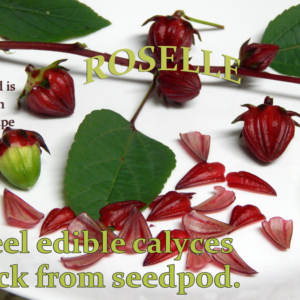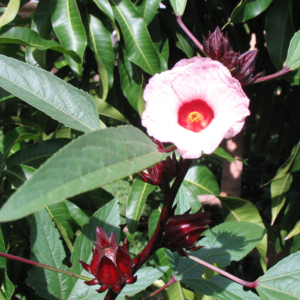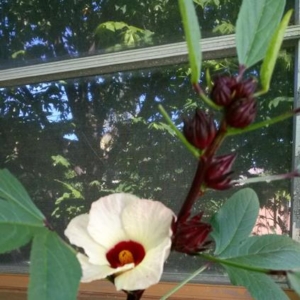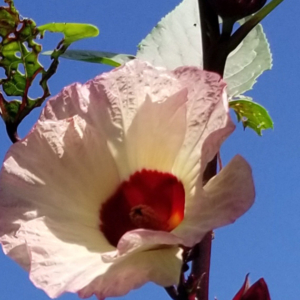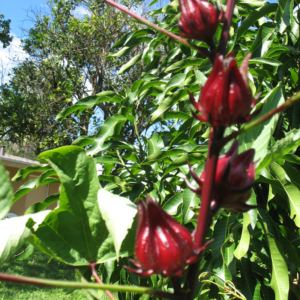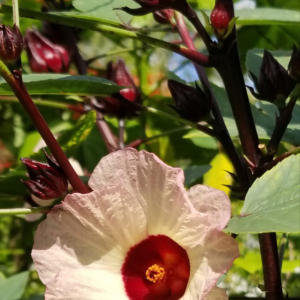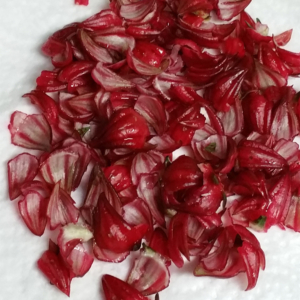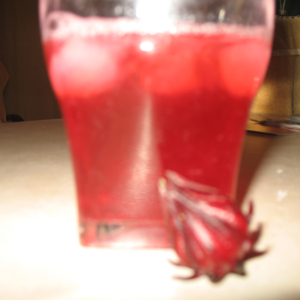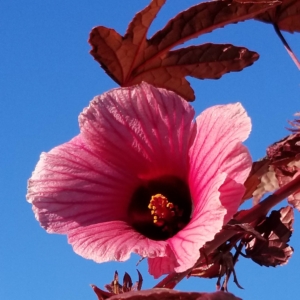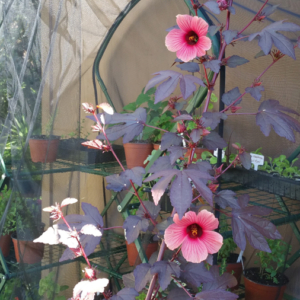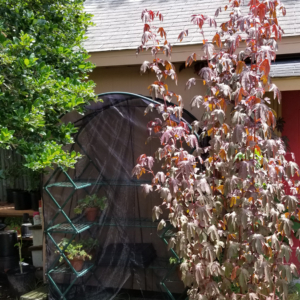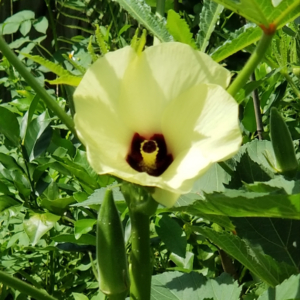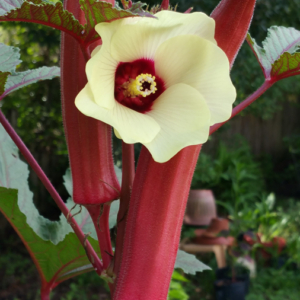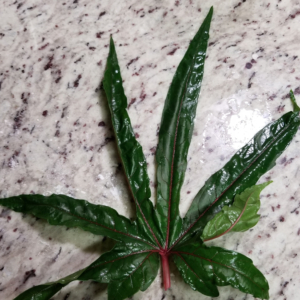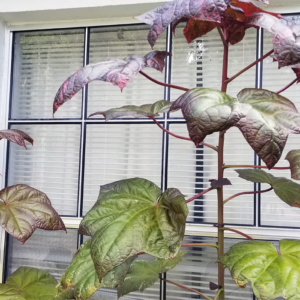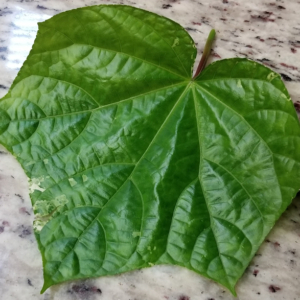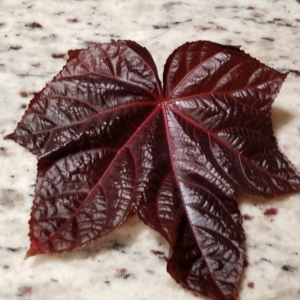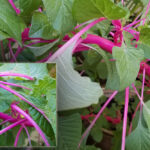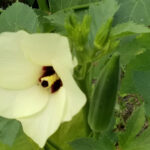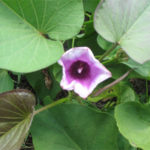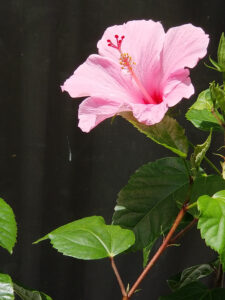 Let’s start with Hibiscus. Hibiscus is among the most recognizable flowers in the Florida landscape. Who doesn’t have at least one in their yard? Hibiscus belongs to a large family of plants called Mallows: Malvaceae. This useful family contains such notables as Cotton, Jute, Cacao/Cocoa and my own personal enemy, the invasive and aggravating Caesarweed. There’s just something too inevitable about learning that a marvel like Cacao and a nightmare like Caesarweed are related. Isn’t that how it goes in families? But I’m getting sidetracked. Nobody wants to hear about my efforts to eradicate Caesarweed, which always leaves me frustrated, sweating and yanking about a million burrs from hair and clothing. And to think that somebody brought this plant to Florida, deliberately! To make rope! Good grief! Aren’t there more agreeable weeds that can be used for rope making?
Let’s start with Hibiscus. Hibiscus is among the most recognizable flowers in the Florida landscape. Who doesn’t have at least one in their yard? Hibiscus belongs to a large family of plants called Mallows: Malvaceae. This useful family contains such notables as Cotton, Jute, Cacao/Cocoa and my own personal enemy, the invasive and aggravating Caesarweed. There’s just something too inevitable about learning that a marvel like Cacao and a nightmare like Caesarweed are related. Isn’t that how it goes in families? But I’m getting sidetracked. Nobody wants to hear about my efforts to eradicate Caesarweed, which always leaves me frustrated, sweating and yanking about a million burrs from hair and clothing. And to think that somebody brought this plant to Florida, deliberately! To make rope! Good grief! Aren’t there more agreeable weeds that can be used for rope making?
Roselle and Her Relatives
Within the Hibiscus family we find several edibles that are particularly useful to grow during our long summers. One favorite is Okra. Whether pickled, fried, added to jambalaya or gumbo, sautéed with tomatoes or steamed over a pot of blackeyed peas, okra has been appreciated by generations of Floridians.
Roselle, also called Florida Cranberry, Red Sorrel or Jamaica Sorrel is another worthy choice. If you enjoy tart flavors, Roselle is a real treat. The nutrient-rich leaves and ripe calyces can be used in teas and other drinks, salads and cooked dishes. The ripe calyces can be candied or made into syrup. I love a nice mug of steaming Roselle tea with ginger for sore throat or cold. The ripe calyces can be used to make Florida cranberry sauce for Thanksgiving. Chop freshly picked calyces and simmer with sugar, freshly-squeezed orange juice, a little orange zest, cinnamon and freshly-minced ginger.
Many recipes using Roselle can be found online by searching Recipes Roselle.
False Roselle is a close relative of Roselle, often sold as Cranberry Hibiscus. The edible red leaves and flower petals are nutritious, can be used in teas, salads and stir fries. While the leaves are somewhat tart, they are much milder than cousin Roselle. The flowers do not develop fleshy calyces like Roselle. Therefore, we grow them for edible leaves and petals, and as a lovely ornamental. This tender perennial can be damaged by frost in our area, but readily self-seeds … maybe a tad too enthusiastically. The red leaves mean unwanted seedlings are easy to spot and remove. I’ve never found this a bother. False Roselle will tolerate light shade, but grows bushier and flowers better in full sun.
South Sea Salad Tree, also called Aibika, Sunset Hibiscus or Sweet Hibiscus is easily grown in our area. These perennials grow tall and ornamental. The large yellow blooms look like okra flowers. I have noticed that named varieties like Auntie Lilli and Chief Kubo’s Prize don’t flower much, if at all. The edible leaves can be used fresh in salads and in stir fries. Young leaves are used as a spinach substitute. The leaves become somewhat mucilaginous as they grow larger. Considering my love of okra, I don’t know why this should put me off. As with okra, I doubt it would be an issue if I had grown up eating them as a wrap for fish or rice. Comfort foods have as much to do with warm associations and treasured memories, as with texture or flavor.
During hard times I would be very thankful to have access to these nutritious leaves, which are also a great source of plant protein. They are perennial in our area, always a bonus for any edible. The named varieties can be started from cuttings or small plants.
Onalee’s Seeds is a reliable local source for older Central Florida favorites including seed for both Yellow and Pink Flowering Roselle. Onalee also sells False Roselle and South Sea Salad Tree, sold as Sunset Hibiscus.
